Why Non-Fungible Tokens (NFTs) Are Much More Than Just Monkey GIFs
Let's explore what NFTs are, how they differ from other digital assets, and why they are significant.
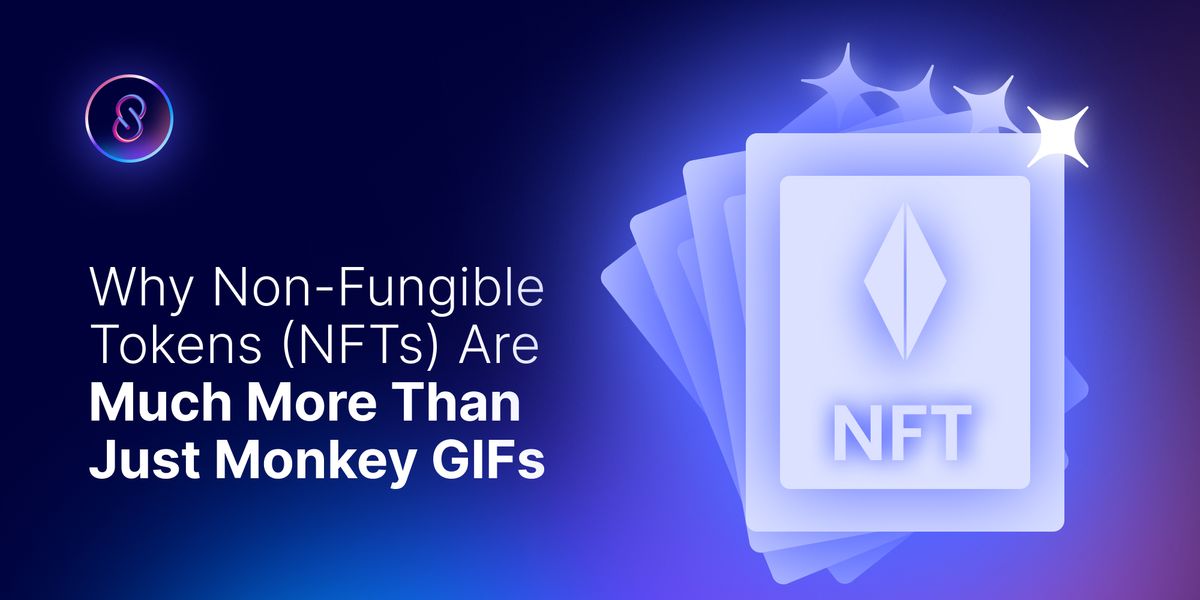
Non-Fungible Tokens (NFTs) have become the latest buzz in the world of digital assets. They have gained widespread attention for their unique ability to represent a wide range of digital assets and offer them in a decentralized, transparent, and secure manner. Let's explore what NFTs are, how they differ from other digital assets, and why they are significant.
What are NFTs?
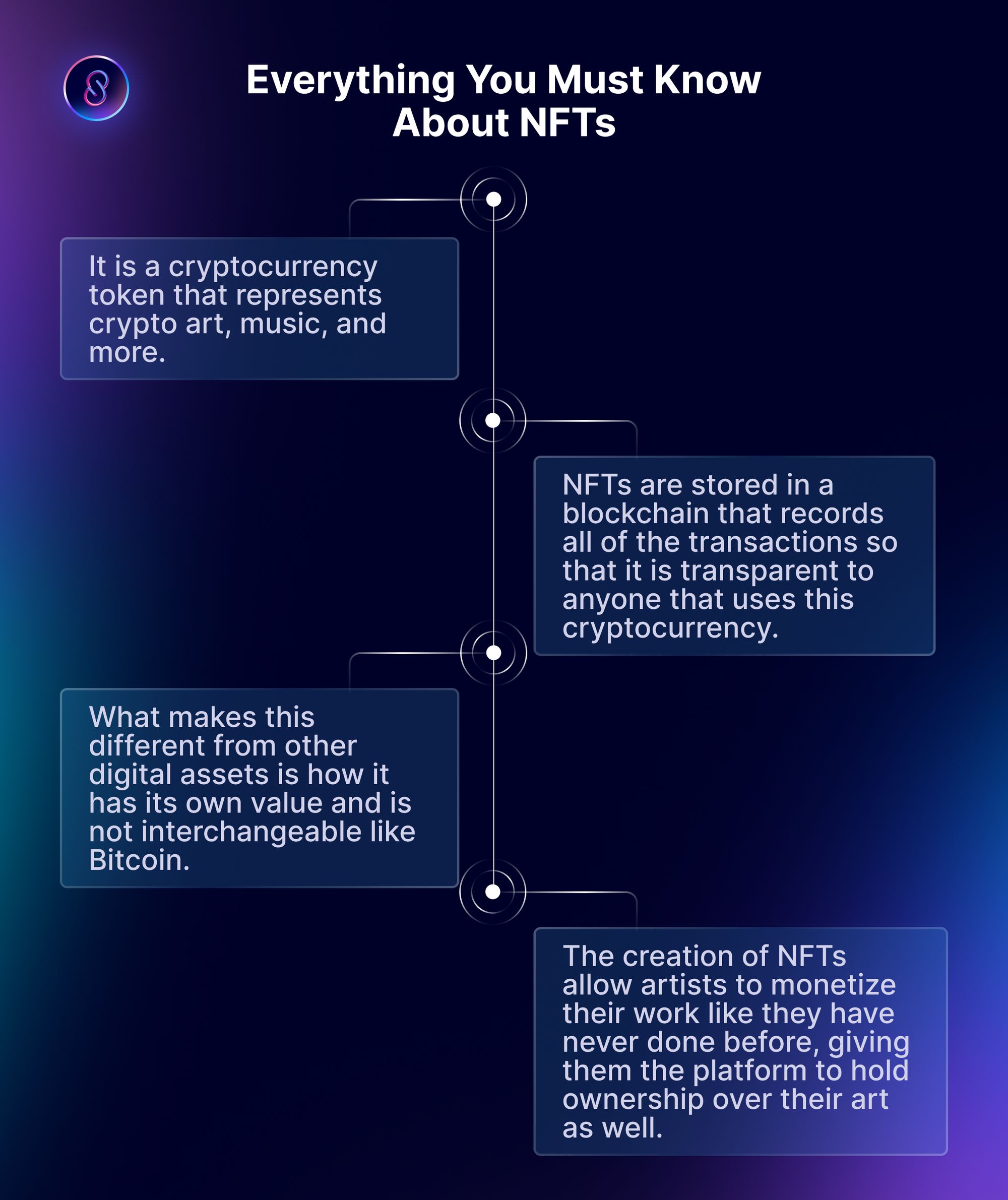
NFTs are a type of cryptocurrency token representing a unique digital asset such as crypto art, music, videos, digital collectibles, and more. Unlike other interchangeable cryptocurrencies with no intrinsic value, NFTs are one-of-a-kind and represent ownership of a specific asset. They are stored on a blockchain, which is a distributed public ledger that records all transactions and ensures transparency, security, and immutability.
How do NFTs differ from other digital assets?
The primary difference between NFTs and other digital assets is their uniqueness and verifiable ownership. Unlike digital assets such as cryptocurrencies or traditional digital files, NFTs are not interchangeable; each represents a distinct asset with a specific value. For example, while you can exchange one Bitcoin for another, you cannot exchange one NFT for another, as each NFT represents a unique asset.
Another significant difference is the way NFTs are created and used. NFTs are often associated with crypto art and digital collectibles, which are unique digital assets that can be bought and sold, like physical art or collectibles. NFTs enable artists and collectors to monetize their digital creations in a way that was not possible before. They provide a way for creators to protect their work's authenticity and maintain control over its distribution.
Why are NFTs significant?
NFTs have created a new market for digital assets that were previously difficult to monetize. They offer a new way for artists, musicians, and other creators to earn revenue from their work and provide collectors with a new type of asset to invest in. NFTs have also opened up new possibilities for gaming and virtual reality, as unique in-game assets can be represented by NFTs, which can be traded and owned by players.
Moreover, NFTs can potentially disrupt the art world, where the value of art is often subjective and difficult to measure. NFTs enable artists to prove the authenticity of their work, eliminate the need for intermediaries such as art dealers, and provide a way to track the ownership history of a piece of art.
Benefits & Use Cases of NFTs – More Than Just Gifs

1. Crypto Gaming Tokens
One of the most exciting use cases for NFTs is in the world of gaming. Many games have in-game items, such as weapons or skins for characters, that can be traded or sold. However, these items are often owned by the game publisher and cannot be transferred outside of the game's ecosystem. With NFTs, these items can be represented on the blockchain, allowing players to own their in-game items and transfer them between games or sell them on open marketplaces. This can provide a new revenue stream for game developers and enable players to make money by playing games.
2. Digital Asset Ownership on Blockchain
NFTs also enable the ownership of digital assets to be verified on the blockchain. For example, an artist can create a unique digital art piece and represent it as an NFT. The NFT will include information about the artwork, such as its author, date of creation, and provenance.
Once an NFT is created for the artwork, it can be transferred between owners, and the ownership history will be stored on the blockchain, making it easily verifiable. This provides a way for artists to monetize their work and protect their intellectual property.
3. Monetizing Digital Assets
Another significant benefit of NFTs is the ability to monetize digital assets. This is particularly relevant for musicians and other creators who have struggled to make money from their work in the age of digital piracy.
By representing their work as an NFT, they can sell their digital assets directly to fans, who can then trade or sell them on open marketplaces. This provides a new revenue stream for creators and enables them to control the distribution of their work.
4. Verifying Authenticity
NFTs can also be used to verify the authenticity of physical goods. For example, luxury brands can use NFTs to represent their products, making it easy to verify that the product is genuine. This can help to prevent counterfeiting and provide consumers with confidence that they're purchasing an authentic product.
5. Decentralized Identity Management
Finally, NFTs can be used for decentralized identity management. In this use case, an NFT represents a person's identity, and the ownership of the NFT can be used to verify the person's identity. This can be particularly useful in situations where a centralized identity management system is not desirable or where privacy is a concern.
The Rise of Non-Fungible Tokenization & Its Impact on the Art World

Non-fungible tokens (NFTs) have recently been a hot topic in the crypto world, with the crypto art market particularly seeing a significant impact. NFTs enable digital art to be tokenized on the blockchain, creating a new market for rare digital assets.
Crypto Art Market
The crypto art market has seen explosive growth in recent years, with some pieces selling for millions of dollars. Crypto art is essentially digital art that is created using blockchain technology. It is often one-of-a-kind and can be sold as an NFT, making it a rare and unique digital asset. The crypto art market has created a new category of art, with many traditional art collectors and investors now turning their attention to the digital art market.
Tokenizing Artwork on Blockchain
Tokenizing artwork on the blockchain is a process that involves creating an NFT that represents a particular piece of digital art. The NFT includes information about the artwork, such as its author, creation date, and provenance. Once an NFT is created for the artwork, it can be sold on open marketplaces or traded between owners, with the ownership history being stored on the blockchain.
Tokenizing artwork on the blockchain has several benefits.
- Firstly, it enables artists to monetize their digital art in a new way. Instead of relying on traditional sales channels such as galleries and auctions, artists can sell their work directly to collectors on open marketplaces. This can provide a new revenue stream for artists and enable them to reach a global audience.
- Secondly, tokenizing artwork on the blockchain provides a way to verify the authenticity of digital art. With traditional art, authenticity can be difficult to verify, which can lead to issues with forgery and fraud. However, by representing digital art as an NFT on the blockchain, the authenticity of the art can be easily verified, providing collectors with confidence that they're purchasing a genuine piece of art.
Rare Digital Assets Trading Platform
Another significant impact of NFTs on the art world is the creation of rare digital asset trading platforms. These platforms enable collectors to buy, sell, and trade rare digital assets such as crypto art. The trading platforms typically operate using blockchain technology, with NFTs representing the digital assets being traded. Some of the most popular rare digital assets trading platforms include SuperRare, OpenSea, and Nifty Gateway.
The rise of rare digital assets trading platforms has created a new market for digital art and other rare digital assets. It has enabled collectors to access a global market and trade with other collectors from around the world. Additionally, the use of blockchain technology has provided a way to verify the authenticity of the digital assets being traded, which has helped to prevent fraud and protect collectors.
What Does the Future Hold for NFTs?
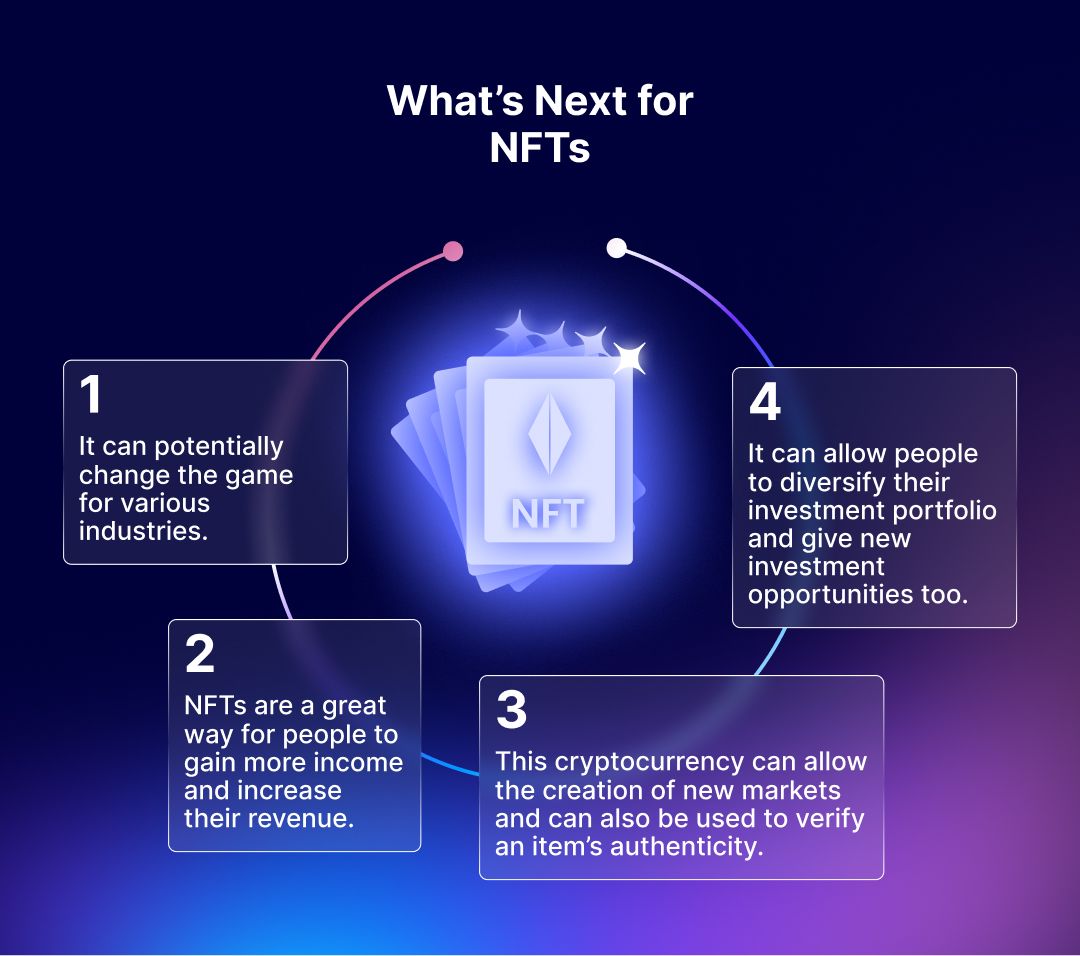
NFTs have the potential to revolutionize a wide range of industries. For example, they can be used to authenticate the ownership of digital assets and to create new markets for rare and unique items. They can also be used to create new revenue streams for content creators and to provide new investment opportunities for investors.
The Growing Attraction of NFTs
The growing attraction of NFTs can be attributed to several factors.
- NFTs enable the ownership of digital assets to be authenticated and verified using blockchain technology. This provides a way to verify the authenticity of digital assets, which is important in industries such as art and music, where the authenticity of the work is critical.
- Secondly, NFTs can create new markets for rare and unique items. This has led to a surge in demand for NFTs representing digital art and collectibles. As the market for NFTs continues to grow, it's likely that we'll see new and exciting use cases for this technology.
- Thirdly, NFTs can provide a new revenue stream for content creators. For example, musicians and artists can create NFTs representing their work and sell them directly to fans. This can provide a new way for artists to monetize their work and connect with their audience.
- Finally, NFTs provide new investment opportunities for investors. As the market for NFTs continues to grow, investors can invest in NFTs representing rare and unique items, potentially generating a significant return on investment.
The Future of NFTs
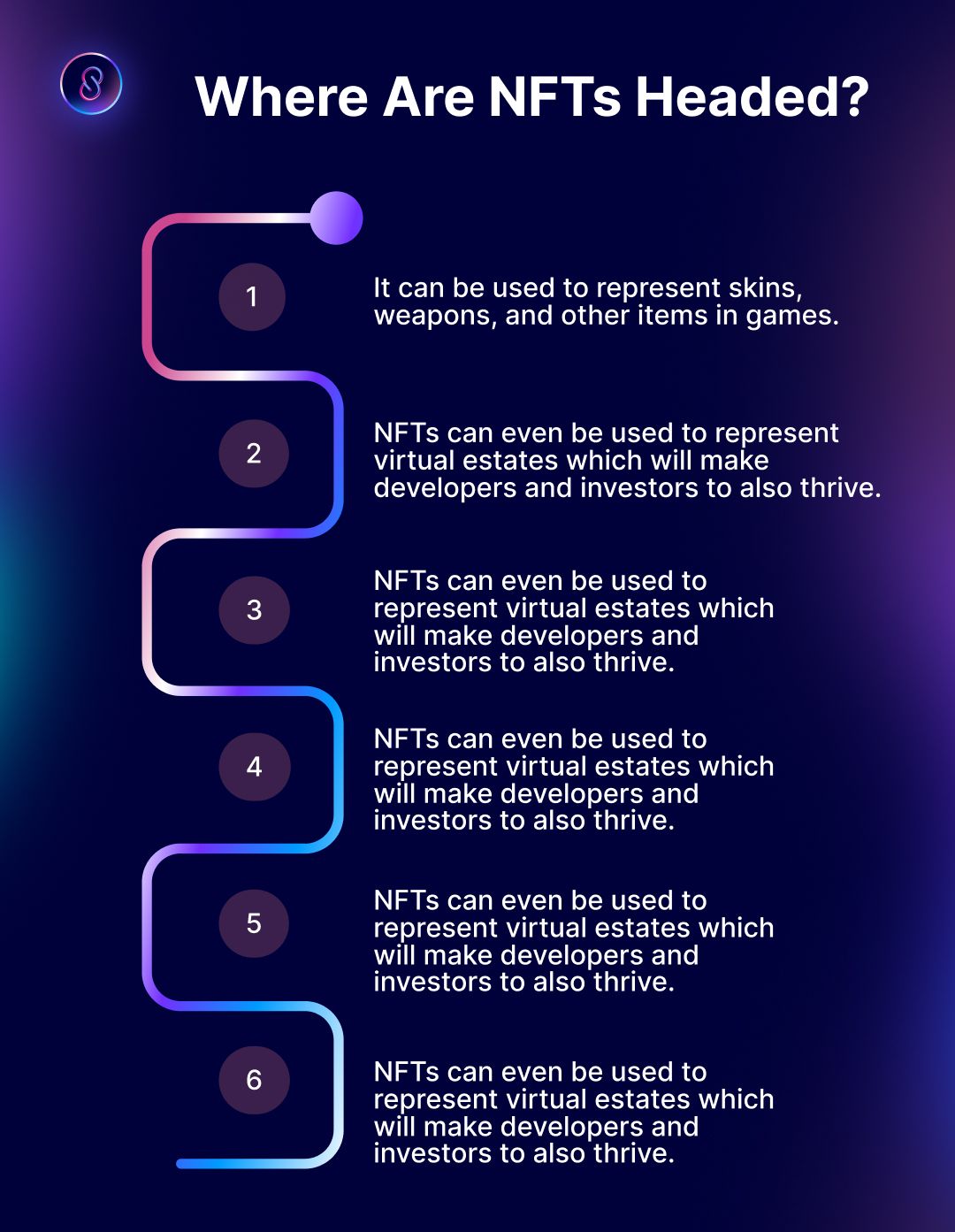
The future of NFTs is bright, with many exciting potential applications on the horizon. Here are a few examples of how NFTs may be used in the future:
- Gaming: NFTs can be used to represent in-game items, such as skins, weapons, and other virtual items. This can create a new market for gamers, allowing them to buy, sell, and trade rare and unique items.
- Virtual Real Estate: NFTs can be used to represent virtual real estate, such as land in virtual worlds. This can create new investment opportunities for investors and a new market for developers.
- Sports: NFTs can be used to represent sports collectibles, such as game-worn jerseys and autographs. This can create a new market for collectors and provide a new revenue stream for athletes.
- Music: NFTs can be used to represent music and provide a new way for artists to monetize their work. For example, an artist could create an NFT representing a new album and sell it to fans.
- Identity: NFTs can be used to represent identity and provide a way to authenticate individuals in a decentralized manner. This can provide a new way to verify identity, which is important in industries such as finance and healthcare.
Conclusion
Non-fungible tokens (NFTs) are a revolutionary technology that has the potential to transform a wide range of industries, including art, music, gaming, and finance. Through the use of blockchain technology, NFTs enable the authentication and verification of the ownership of digital assets, creating new markets for rare and unique items, and providing new revenue streams for content creators and investment opportunities for investors.
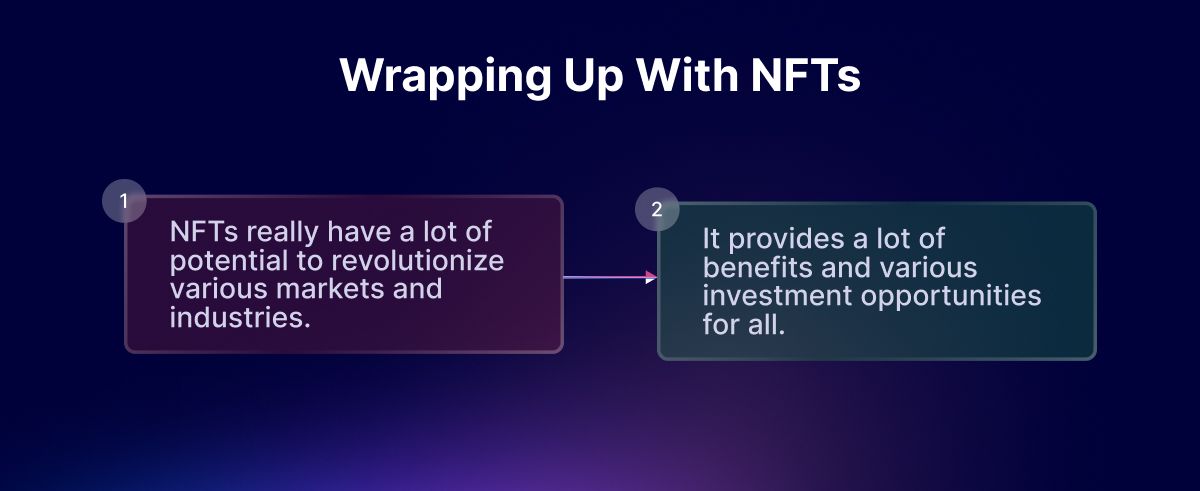
The benefits and use cases of NFTs are vast, ranging from the creation of rare and unique digital assets, to the authentication of digital asset ownership, and the creation of new investment opportunities. Whether it's the crypto art market, money gifs with blockchain technology, crypto gaming tokens, or digital asset ownership on the blockchain, NFTs are changing the game.
As the market for NFTs continues to grow, the future of NFTs is bright, with many exciting potential applications on the horizon. Whether it's in gaming, virtual real estate, sports, music, or identity verification, NFTs have the potential to transform a wide range of industries in the years to come. As such, it's clear that the attraction of NFTs is not just a passing trend but rather the beginning of a new era in digital ownership and verification.

Connect with InfinitySwap
Bitfinity Wallet |AMM | Twitter | Website | Telegram | Discord | Github

*Disclaimer: While every effort is made on this website to provide accurate information, any opinions expressed or information disseminated do not necessarily reflect the views of InfinitySwap itself.


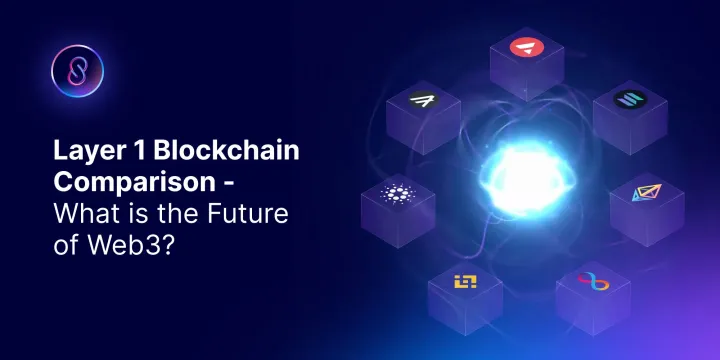

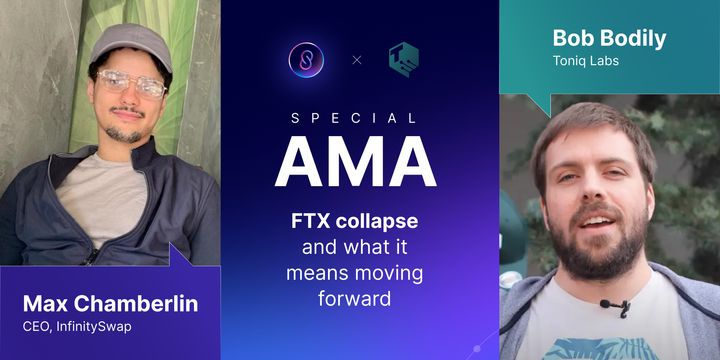
Comments ()